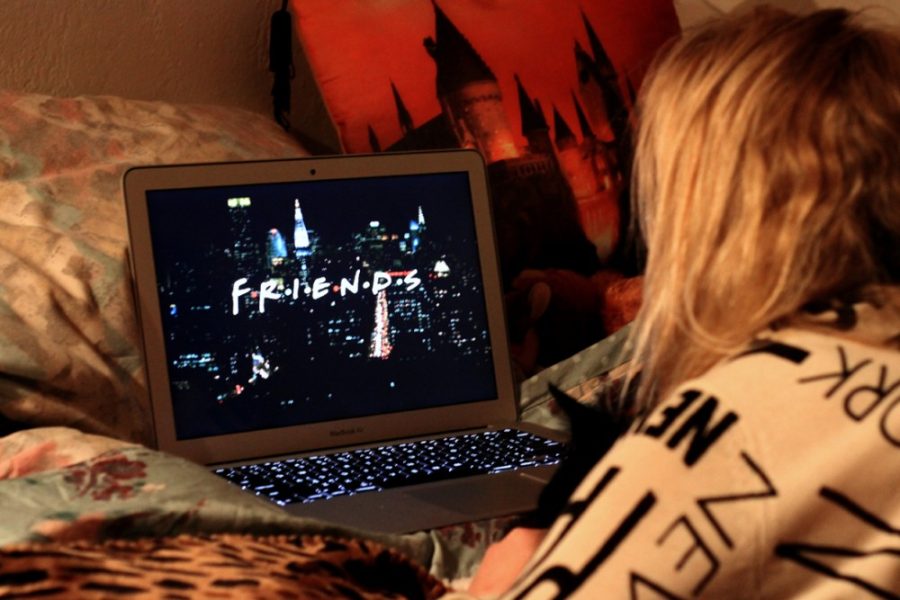Video streaming services are relatively new. Netflix, one of the most popular streaming services and also the oldest, switched their DVD delivery service to a streaming service in 2007. The new service took time to gain traction, but streaming was here to stay. In 2011, Amazon rebranded an older video service into a streaming one now called Prime Video. These two are now seen as giants in the entertainment industry, but, when they started, they faced strong competition from cable TV. Shows and movies took weeks or years before even appearing on Netflix and Prime Video, creating a barrier to widespread popularity.
RELATED: OPINION: Hulu vs. Netflix
What really broke the barrier for online streaming was Netflix’s first original series, “House of Cards.” The show was only available on Netflix and came out as a whole season rather than weekly episodes. This began the era of binge-watching and the rise of streaming empires. Before long, Prime Video and Netflix were no longer the sole competitors in the industry. Hulu, Apple TV+, Disney+, CBS All Access, HBO Max and Peacock all joined the “streaming wars.” Many of these streaming services carried original content that could only be seen on their platforms. New and exclusive shows and movies draw in crowds to try their free trials with the hope of converting them to subscribers. Partnerships between services have also led to affordable bundles that pose a serious threat to cable. For example, Spotify, an audio streaming service, partnered with Hulu and Showtime to create a bundle for college students where all three services are only $4.99.
It’s important to understand who is watching what to see where entertainment is headed. According to Forbes, “among millennials, those aged 22 to 35, 88% subscribe to internet video services while just 51% subscribe to cable or satellite. Among Generation Z, those aged 14 to 21, only 80% subscribe to internet video services and 57% pay for traditional pay TV.” In younger generations, streaming services seem to be the main choice while the older generations continue to enjoy what cable has to offer.
As someone who is part of Generation Z, I get why the demand for streaming services is higher now in comparison to cable. For one, they are easier to manage and pay for than cable TV. As a college student with a budget to match, having a subscription with Spotify and getting free Hulu and Showtime along with it for $4.99 is affordable. I can watch the network shows I want on Hulu, Showtime carries a lot of the movies I love and I can subscribe and cancel with a smartphone as opposed to diving down an internet rabbit hole or enduring a lengthy conversation with a far-away representative. If I decide I don’t want to keep paying, or I can no longer afford to, I simply sign into my app store, go to subscriptions and click cancel. It is as easy as that. If I wanted to get cable, it would be a lot harder to deal with and a whole lot more expensive. Average plans cost around $50 per month, depending on the company and package. I am currently playing $16 for Netflix and $4.99 for Hulu and Showtime. This means I only pay $22 for all the content I need, and less than many cable plans could offer me.
During the pandemic, I have been stuck inside with three roommates who also pay for their own streaming services. Between us, we subscribe to HBO Max and Disney+ in addition to my subscriptions, all of which we can watch together on our living room TV. I really have no need for cable at this point and many other Millennials and Generation Z individuals feel the same way. Unlike traditional cable, which, as the name implies, requires a hardwired connection, the content that streaming services offer goes with us anywhere we take a smartphone, tablet or computer. If we move houses or apartments, we do not need to call or make a change online.
Streaming services are more convenient for the lifestyles today’s younger adults are living. With the conditions created by the COVID-19 pandemic, demand for streaming services has grown even greater. With many people stuck inside and no visits to the movie theaters, Hollywood has been forced to adapt, and they now offer many of their new movies on streaming services too, which only widened selections and convinced more adults to switch to streaming.
While baby boomers and Gen Xers will probably keep cable alive for a few more decades, the days are numbered for traditional television. Younger generations are driving changes in the entertainment economy that will push cable out of the picture in exchange for an ever-growing number of more convenient, affordable and modern options.
Follow Andrea on Twitter

Andrea is a freshman law major. She likes to listen to audiobooks and games in her free time.









